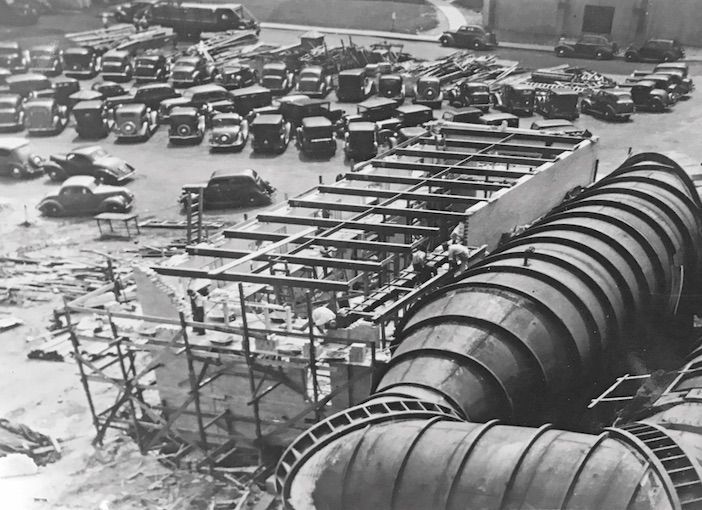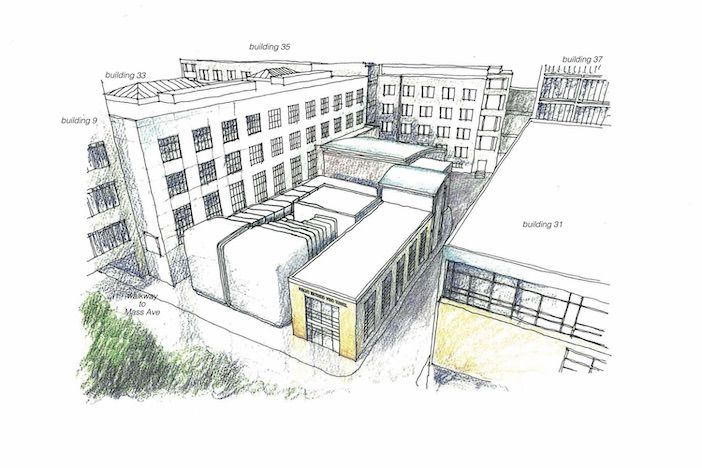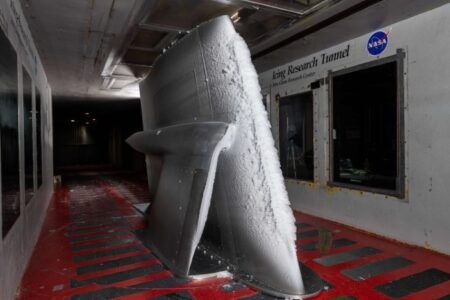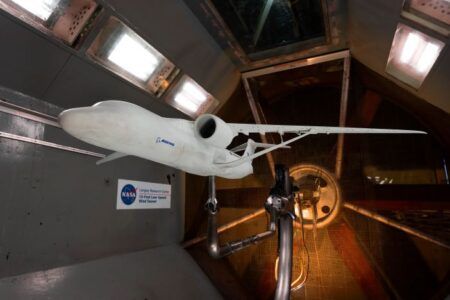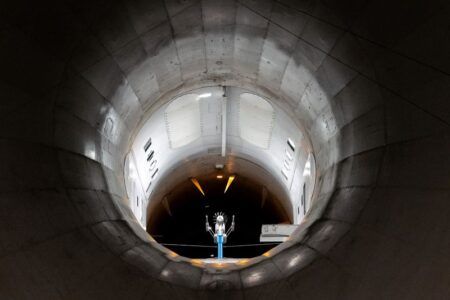A US$27.3 million wind tunnel being built at MIT is pioneering a new concept in ultra-compact wind tunnels that reduces their size and cost.
The wind tunnel, which is a replacement for the university’s 80-year old Wright Brothers Wind Tunnel, will be the largest within an academic institution in the USA once complete.
Part-funded by a donation from Boeing, the new tunnel will inherit the name of its famous predecessor. It will also use for the first time a new concept developed for ultra-compact closed-circuit wind tunnels that increases the size of the test section and reduces its cost.

the heart of MIT’s AeroAstro department
The “screened expanding turning vanes”, which have been designed by Professor Mark Drela, director of the Wright Brothers Wind Tunnel, are installed in the final corner of the tunnel before the contraction into the test section.
The vanes have enabled the tunnel’s test section volume and area, and its contraction ratio to be almost doubled – without increasing the footprint of the facility. The tunnel’s test section volume and area have increased from 850ft3 to 1,620ft3and 57ft2 to 90ft2, while the contraction ratio has increased from 4.5 to 8.0, giving much higher air flow quality.
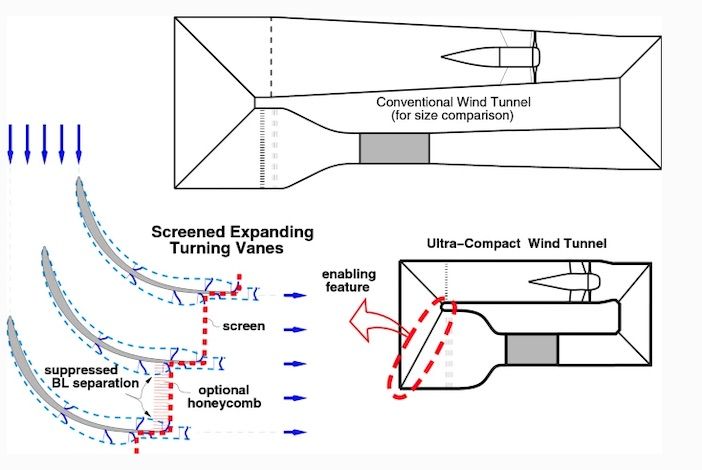
Drela said, “The classical way to suppress separation in a too-short diffuser is to use screens, but the diffuser can only be shortened by so much. The flow must then still be straightened with a downstream honeycomb.
“The screened expanding turning vane effectively combines these elements with the turning vanes of the last corner, so that as they turn the flow they also simultaneously function as a zero-length diffuser and a flow straightener.
“There is no downside – the vanes enable the tunnel to be made more compact and the small screens and honeycombs installed in the vane passages are much less costly than the usual large single-piece screens and honeycomb.”
Improving efficiency
The wind tunnel will use a 2500hp variable-frequency drive motor, a significant improvement on the previous 2000hp DC motor, which Drela described as a “mechanical nightmare with a thousand-part transmission and a 100,000 to one
gear reduction”.
“When you were running at low speeds it was like driving a car at 50km/h in first gear – horribly loud and vastly inefficient,” says Drela. “But the new VFD drive has no moving parts apart from electrons in solid state electronics – it will be much quieter and more efficient.”
As a result of the improvements, airflow speed in the new tunnel will increase from 240km/h to 320km/h. In addition, a new data acquisition and control system based on MATLAB and Simulink will enable engineers to set up tests faster and easier.
“Simulink drives the hardware, it acquires data, it can process it on the fly as needed, and then log it. It’s perfect for this application,” says Drela.
The new tunnel will be used for graduate and undergraduate projects and by industry. “These days there is a lot of tests which can be handled reliably enough by computer modelling. But simulation hasn’t displaced wind tunnels, it just frees up time in them. Instead of the easy stuff, the tunnel can be used to solve the harder problems we didn’t have time for before,” says Drela.
Typical future experiments could examine laminar / turbulent transition in aircraft such as UAVs and in high-performance laminar aerodynamic components such as wings.
The wind tunnel test section’s sides and top are made of glass so optical sensing techniques such as laser-doppler and particle image velocimetry, ultra violet illumination for advanced fluorescent flow visualization and infrared illumination for motion tracking and aeroelastic deformations can be used.
“The design objective wasn’t to target a specific set of tests to use the tunnel for, it was to build in as much flexibility as possible. The old tunnel was used in very different ways to those originally envisaged for it when it was built before WW2,” says Drela.
“The Wright Brothers Wind Tunnel is not just a research asset for MIT. During MIT “Open House” days for visitors, the old tunnel would always have the longest lines of people queueing to see it. It was one of our most visible icons to the outside world and we want the new tunnel to continue this.”
Renovations are also being made to MIT Building 17, which houses the control facilities, and direct connection made to MIT’s AeroAstro workshops as part of the improvement program.
The multi-use wind tunnel
Since September 1938, MIT’s Wright Brothers Wind Tunnel has played a major role in the development of aerospace, civil engineering and architectural systems. From designing WW2 military aircraft to more recent long-range studies of unsteady airfoil flow fields, jet engine inlet-vortex behavior, aeroelastic tests of unducted propeller fans, and panel methods for tunnel wall interaction effects.
Industrial testing has varied across the decades from helicopter antenna pods, in-flight trailing cables, stationary and vehicle mounted ground antenna configurations, to the aeroelastic dynamics of airport control tower configurations, Olympic ski gear, space suits, racing bicycles, subway station entrances, and wind turbines.
